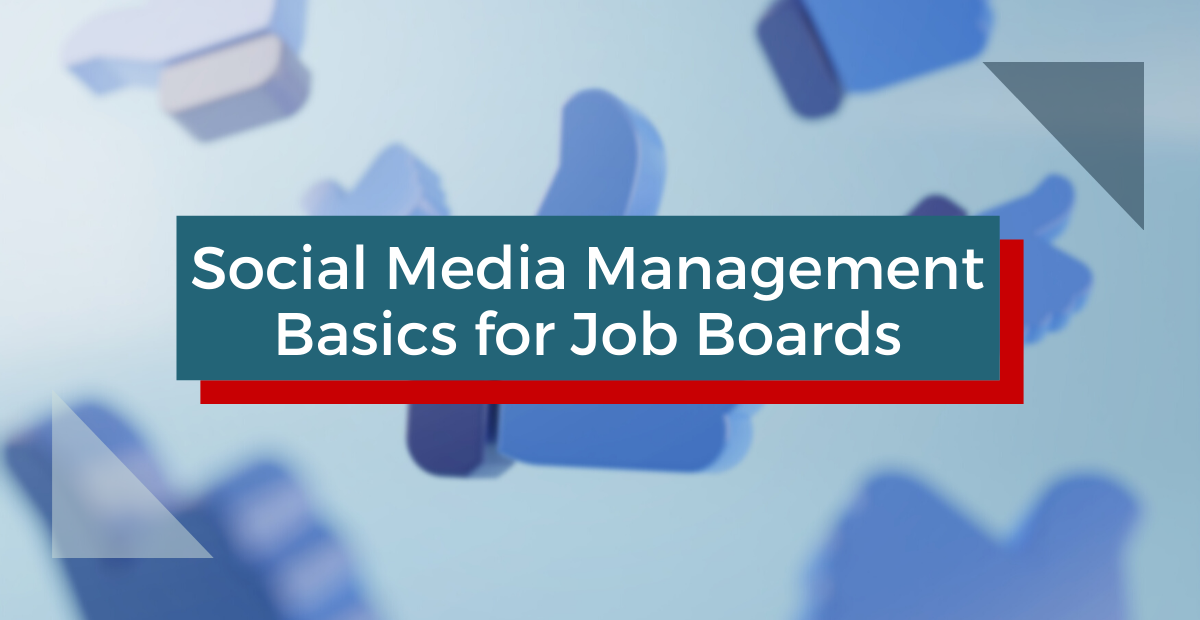So far in our blog series on social media for job boards, we’ve covered:
- Simple social media tricks and tools you can use to reach candidates
- How to use demographic research to find out which social media platform works best for your market
- Why using an experimental approach with social media can help you discover and optimize your strategy
- How to get comfortable with using social media for business, even if you don’t yet “get” the whole thing
- Why using social media for your job board is an advantage when marketing to employers and recruiters
By now, you understand the value of social media, how to investigate and test which platforms work best with your audience, and how it can help your job board, its customers and job seekers.
Now, here is your guide for creating a streamlined social media management routine for your job board.
Your tasks fall into three major categories: curation, scheduling, and monitoring.
Curation
What? Finding and gathering the content you want to share on social media. As we’ve outlined before, this can include job posts, blog posts, calls to action, news articles, etc.
How? There are lots of tools and ideas out there to help you find content, such as:
- Google news alerts
- Feedly, and other RSS readers let you monitor industry blogs and news sites.
- The social media accounts of industry leaders, influencers, and news sites for the content they share – always good to follow them.
When? There is more than one way to go about it. One way is to keep a document with a running list of content and add to it as you discover it throughout your week. This should really only take a few minutes each day. Or, you might prefer to batch the work, and gather all your content at once.
Regardless of which method you prefer, you might also try popping the content you find into your planned schedule or calendar as soon as you find it. Which brings us to…
Scheduling
What? Planning out when you share, what you share, and where you share it, as well as using tools to automate the actual publishing of your social media calendar.
How? Social media scheduling tools are plentiful, and there’s a nice comparison of options in this LifeHack.org article. The top two that I would recommend are Buffer and Hootsuite.
- Buffer let’s you pre-schedule posts to social media, and even will provide you with suggested optimized times to share based on your following. There is a maximum of ten items you can schedule ahead of time in the free version.
- Hootsuite is a little more robust, in that you can schedule a far greater number of posts ahead of time, and its paid version lets you bulk upload .CSV files of your schedule.
- Google Docs or Microsoft Office programs can also help you in the basics of this area, particularly when it comes to planning a social media calendar.
Both Buffer and Hootsuite also have web browser extensions that let you share or schedule content on the spot.
Your scheduling tasks may vary depending on what tool you use. Hootsuite, Buffer, and Klout all work a bit differently, but the principal is the same. Enter your content, whether it’s URLs, images, or videos, or just plain text with hashtags, and select the account you’re posting to, and the time and date and hit the “schedule” button!
When? Again, depending on how you prefer to work, you might batch the task into one chunk of time, or you might spend a few minutes every day adding content to your schedule.
Monitoring
What? Responding to messages, following other accounts, thanking others for following you, and generally kicking the tires to make sure everything looks right. If you receive complex customer service requests on social media, you’ll want to offer to address them by email or phone.
How? Monitoring can be done simply by logging in to each social media account and actively checking for messages and new followers. Some scheduling tools also let you monitor your social media feeds and notifications, but there are other tools more geared to the task of monitoring as well. Brandwatch.com has a list of their top 15 picks for social media monitoring tools that is worth a look.
When? Monitoring should be performed frequently – a couple times a week at minimum. But it only takes a few minutes to log in, scan for new followers, messages, or stats. Reviewing your stats is probably best done periodically, so that you have sufficient data to analyze.
Depending on the volume of content you share on social media, how much you can manage to automate, and how many active accounts you choose to manage, with a streamlined routine you can spend as little as an hour to an hour and a half on social media on a given week.
The more comfortable you get with with social media and your chosen tools, the easier they’ll become and the faster you’ll get at using them.
Read more posts on how job boards can use social media to their advantage:


Thanks, Adonis!
Yes – the plan is to collect this series into a guide!
Cheers,
Maddy
Great read and love the explanations on what, how, and when these things are needed. As for scheduling, I already tried a few for my clients but currently using Socialdraft for them since they also have bulk upload, scheduling to most popular social sites, and even reporting. Lastly, I think aside from these, we should still consider spending a few minutes a day to do interactions as we cannot depend on with scheduling only.